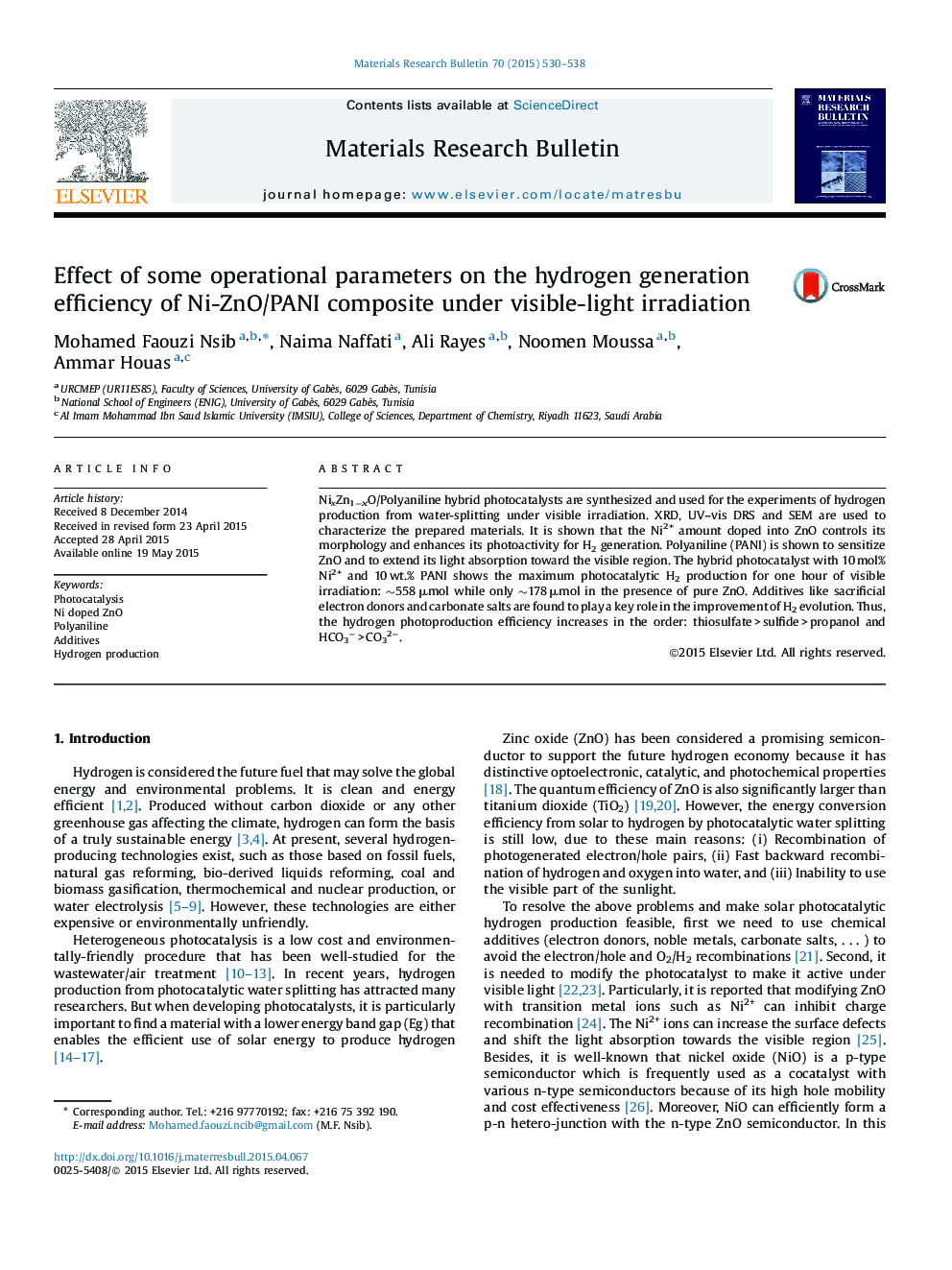| Article ID | Journal | Published Year | Pages | File Type |
|---|---|---|---|---|
| 1487328 | Materials Research Bulletin | 2015 | 9 Pages |
•NixZn1−xO/PANIy photocatalysts are synthesized by the impregnation method.•Ni2+ amount control the morphology of ZnO and enhances its photoactivity.•Both Ni2+ and PANI extend the light absorption of ZnO toward the visible region.•Both Ni2+ and PANI enhance the electron–hole separation.
NixZn1−xO/Polyaniline hybrid photocatalysts are synthesized and used for the experiments of hydrogen production from water-splitting under visible irradiation. XRD, UV–vis DRS and SEM are used to characterize the prepared materials. It is shown that the Ni2+ amount doped into ZnO controls its morphology and enhances its photoactivity for H2 generation. Polyaniline (PANI) is shown to sensitize ZnO and to extend its light absorption toward the visible region. The hybrid photocatalyst with 10 mol% Ni2+ and 10 wt.% PANI shows the maximum photocatalytic H2 production for one hour of visible irradiation: ∼558 μmol while only ∼178 μmol in the presence of pure ZnO. Additives like sacrificial electron donors and carbonate salts are found to play a key role in the improvement of H2 evolution. Thus, the hydrogen photoproduction efficiency increases in the order: thiosulfate > sulfide > propanol and HCO3− > CO32−.
Graphical abstractUV–vis spectra of PANI, ZnO, Ni0.01Zn0.99O, Ni0.01Zn0.99O/PANI3 and Ni0.1Zn0.9O/PANI10 nanocomposites.Figure optionsDownload full-size imageDownload as PowerPoint slide
